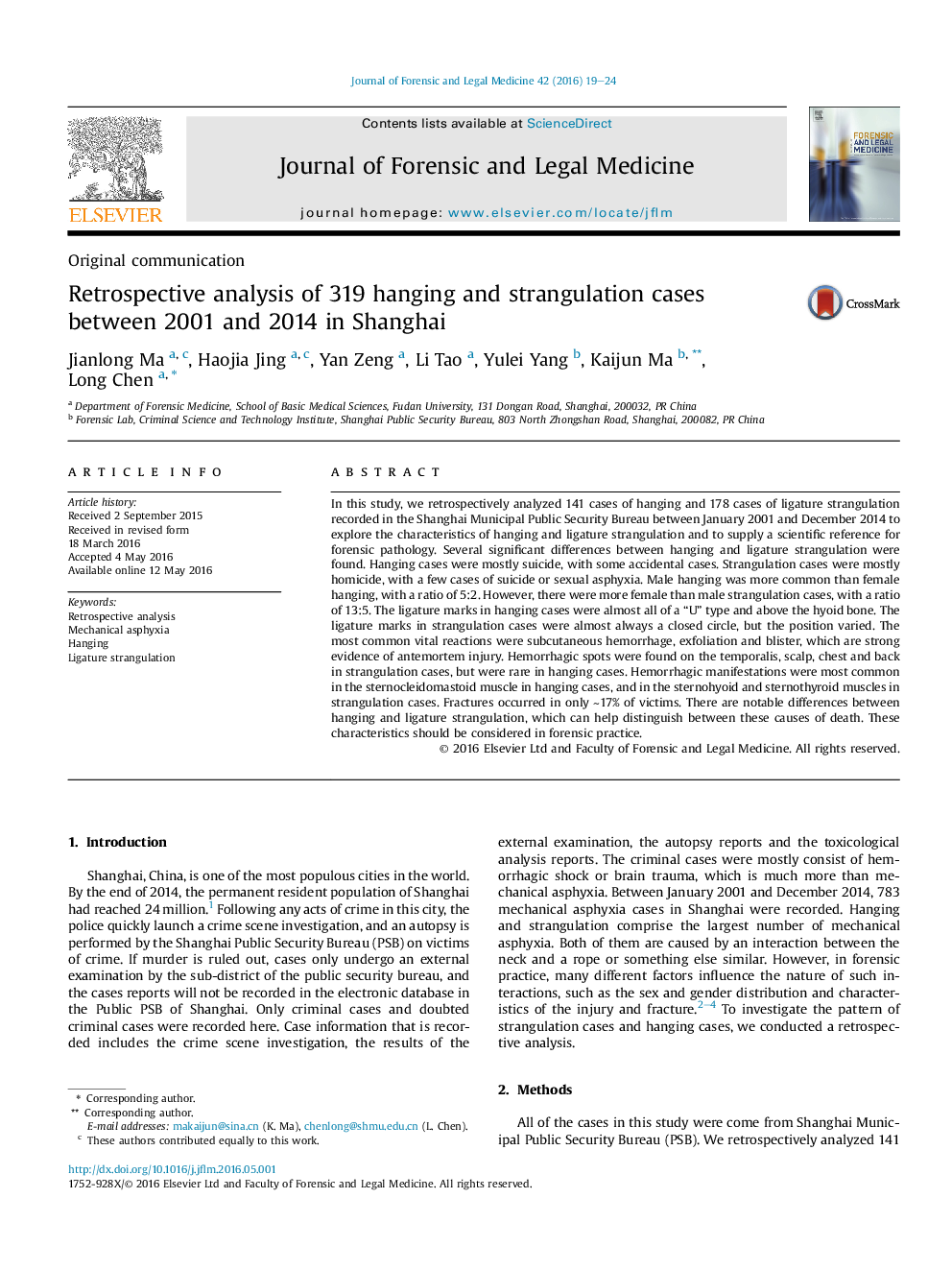| کد مقاله | کد نشریه | سال انتشار | مقاله انگلیسی | نسخه تمام متن |
|---|---|---|---|---|
| 101601 | 161284 | 2016 | 6 صفحه PDF | دانلود رایگان |
• Sex and age distribution are different between hanging and strangulation cases.
• Hanging cases were mostly suicide and strangulation cases were mostly homicide.
• The characteristics of the ligature marks were different between these cases.
• The autopsy and external examination were important for COD identification.
In this study, we retrospectively analyzed 141 cases of hanging and 178 cases of ligature strangulation recorded in the Shanghai Municipal Public Security Bureau between January 2001 and December 2014 to explore the characteristics of hanging and ligature strangulation and to supply a scientific reference for forensic pathology. Several significant differences between hanging and ligature strangulation were found. Hanging cases were mostly suicide, with some accidental cases. Strangulation cases were mostly homicide, with a few cases of suicide or sexual asphyxia. Male hanging was more common than female hanging, with a ratio of 5:2. However, there were more female than male strangulation cases, with a ratio of 13:5. The ligature marks in hanging cases were almost all of a “U” type and above the hyoid bone. The ligature marks in strangulation cases were almost always a closed circle, but the position varied. The most common vital reactions were subcutaneous hemorrhage, exfoliation and blister, which are strong evidence of antemortem injury. Hemorrhagic spots were found on the temporalis, scalp, chest and back in strangulation cases, but were rare in hanging cases. Hemorrhagic manifestations were most common in the sternocleidomastoid muscle in hanging cases, and in the sternohyoid and sternothyroid muscles in strangulation cases. Fractures occurred in only ∼17% of victims. There are notable differences between hanging and ligature strangulation, which can help distinguish between these causes of death. These characteristics should be considered in forensic practice.
Journal: Journal of Forensic and Legal Medicine - Volume 42, August 2016, Pages 19–24
